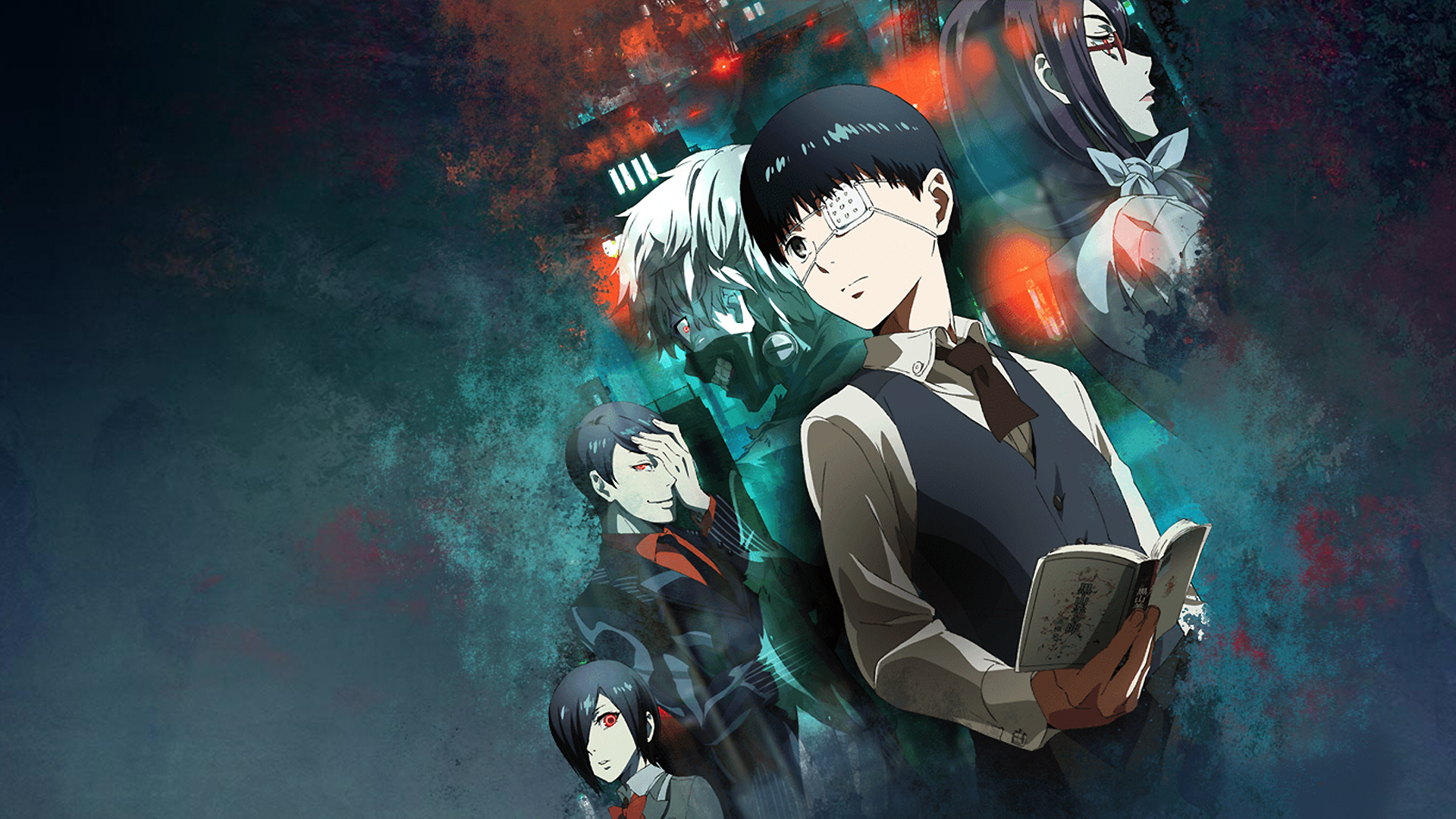*WARNING: THIS ARTICLE CONTAINS HEAVY SPOILERS OF THE MANGA OF TOKYO GHOUL*
Last weekend was the finale of the polarizing series Tokyo Ghoul. While it didn’t end with a bang (leaving some unimpressed, to put it lightly), it will be remembered due to all of the circumstances that came along with it (fair or not). However, for those who did enjoy the anime (like I did), some might be confused as to what the Tokyo Ghoul detractors are saying—why the series is terrible. Sure, the execution of the anime itself had its issues (pacing, dropping in essential characters at random times, etc.). For me, someone who didn’t read the manga before watching the anime a while back, the anime left me wondering how the story went forward or happened. I certainly wanted to know if Ken Kaneki lived through that gruesome battle between the CCG and Aogiri that we witnessed at the end. So I went back to read the manga to see what the fuss was about when looking online for answers about how Tokyo Ghoul finished. Because for those who were unaware, there are a lot of differences between the two mediums.
*For reference, I have not read Tokyo Ghoul:re yet
The most significant complaint I saw about the Tokyo Ghoul anime (whether it be on social media or forums) is that it wasn’t faithful to the manga. Arcs were rearranged, and circumstances/storylines were changed in Tokyo Ghoul √A, leaving fans of the manga feeling betrayed. The reason why Tokyo Ghoul was such a popular franchise was due to how amazing the manga was, and trust me; I couldn’t stop reading. Tokyo Ghoul did an excellent job setting up a world with mysteries for both humans and Ghouls that led me to want to know every answer. It would have been such a pleasure seeing the entire manga faithfully adapted in the anime, to allow those who didn’t or chose not to read the manga to know why it’s so beautiful. I can understand the frustration when reading the manga and then seeing what Studio Pierrot AND Sui Ishida (Tokyo Ghoul author) decided to do with the anime.
At least with the first season, things more or less played out the same way in the manga. However, arcs were rearranged to have the confrontation with Shuu Tsukiyama occur before Touka kills Investigator Mado. I liked this change, unlike the ones we see in Tokyo Ghoul’s second season, due to how devious a villain Mado was. It would have been lame to have someone like him (who was pretty significant in this story) just die off as quickly as it seemed in the manga. You don’t see the full impact of how vital the Mado family was until you read all 14 volumes. Both he and his wife were terrific investigators, and Akira (their daughter) is one of the brightest stars the CCG has to offer and would get a promotion by the end of the manga. Having Investigator Mado meet his maker so quickly in the anime would lessen the impact of the kind of person he was. Plus, I have a feeling that the studio wanted to get Tsukiyama in the anime as soon as possible, due to how memorable his character is. There is no shortage of perverted characters in anime, but Tsukiyama has a special place that might only be rivaled by likes of Hisoka in Hunter x Hunter. So why not rearrange the arcs in a way that dare I say made sense to me, despite how fast each story arc felt. It’d be nice if both battles would have had a little more time to breathe, but with 12 episodes it makes it difficult to express a story entirely.
I think my only complaint about the first season was the fast pace of the series. I find the details that are given in the manga to be part of the appeal of the entire franchise. I enjoyed seeing characters like Itori get more chances to speak and show her stuff. Especially, with Itori being an information broker, I truly enjoyed scenes that involved her, and the suspense that built up between her and Kaneki was compelling in my mind. Or seeing how Rize lived her life before her and Kaneki’s fate became intertwined. I think that was what was missing in Tokyo Ghoul after reading the manga. I find the world that Sui Ishida inhabits to be fascinating, especially with the dynamic of humans vs. Ghouls and how the two species try to coexist, knowing that either one could be killed at that very moment. Getting to see how Ghouls live in this world, and what they do to survive both violently and peacefully had me hooked, but I just never had that feeling from the anime. Instead, I felt the anime was just showing the low points to make it feel like there was nothing in Tokyo Ghoul but darkness. There is a lot, and that’s the story we have when we follow Kaneki, but there was also hope. Hope that Kaneki was fighting for. Hope we didn’t get to see in the second season of the anime.
For whatever reason Sui Ishida decided to have Kaneki go down a different route (√A), and one that felt vastly inferior, as well as confusing to what the manga did. I do not understand why Sui Ishida felt it’d be fun to see Kaneki go down a different path (even though after reading the manga, it felt similar in too many ways). It didn’t make sense to veer off of what made the franchise so popular. You can call it an experiment gone bad, to where Tokyo Ghoul might suffer in the long run (even with a new season on the horizon).
https://twitter.com/pKjd/status/915886821472559105
Probably the most significant change that rubbed me the wrong way was how in Tokyo Ghoul √A Kaneki decided to join Aogiri to help save those he loved. In the manga, Kaneki left everyone to form his group, which included Banjo, Tsukiyama, and even Hinami (that blew me away). Kaneki began his faction to help stop Aogiri from getting stronger and to do more research as to why Dr. Kanou decided to put Rize’s organs in his body. All things that the anime didn’t touch on at all. For me, it was those specific storylines that had me hooked on the manga. I wanted to know more about how Kaneki became stronger, as well as find answers that he has been searching for. In the anime, we barely see Dr. Kanou at all, when everyone feels as if he is the real antagonist of this series. He experiments on humans to turn them into Ghouls (when we look at Nashiro and Kurona as examples). Readers are given a theory as to why Dr. Kanou is doing this to help out a particular organization, but I’d rather not spoil that, since it was only mentioned in a couple of pages in volume 13 (and got me to thinking a lot).
But there were quite a few changes that felt like a downgrade compared to the manga, to go along with issues that the anime had. I like the fact that instead of the big battle in the CCG detention center that Cochlea fans of the anime saw, that it occurred at a secret hideout for Dr. Kanou, where Kaneki gets the chance to hear some answers. Or the fact that Hide was more integral the CCG in locating Ghouls connected to Kaneki. It was also a plus that essential characters weren’t just dropped into the story (such as was the case with the anime). Characters like Matasaka Kamishiro made much more sense as I read the manga then the simple grudge he seemed to have with Rize. Not to mention that bonds that characters like Uta and Yomo share were more apparent in the manga (unlike the anime). It felt a lot cleaner.
Then there is the other massive complaint that the entire second season of Tokyo Ghoul is filler. Technically, that’s not correct, as many scenes in Root A also appeared in the manga. Which is, I think frustrating for those who read the manga. It was as if the anime was trying to imply that it was still faithful to the manga. If you wanted to make an entirely different route for Kaneki to take, why not go all out, instead of giving fans false hope of it going back to how the manga went. Scenes such as Akira and Amon almost kissing before the operation, Kaneki returning to Anteiku and having a confrontation with Touka, and even the Owl Extermination operation all happened in the manga. Again, there were also some significant differences (examples being Kaneki fighting Special Investigator Arima, or the fact that Hide disappears, implying that Kaneki ate him when he was delirious, to name a few), but it was more or less similar to what happened in the manga.
I think my biggest gripe is the decision to change certain things in the anime that were completely unnecessary. The Kaneki faction, with him finding out about Dr. Kanou being the most prominent omission that I think the anime should have reconsidered. The decision as to how they ended Tokyo Ghoul √A will also always be questioned. It wasn’t necessary to steer away from the storylines and cliffhangers that the anime didn’t touch on. Plus, I’m sure if the anime was faithful to the manga, that it’d be popular enough to have more episodes produced which would flush out all the information that readers find out (like character’s pasts). For the manga, a ton of questions are left that probably entice fans to pick up Tokyo Ghoul:re when it is available. Questions like: what happened to all the Special Investigators that were announced dead? Especially when readers were treated to a scene with Dr. Kanou talking about making more Ghouls like Kaneki at the end of the series. What about Mr. Yoshimara and Eto after he was saved? Plus, how about the Ghoul group “Clowns”, a faction that Nico (Yamori’s associate) mentioned, and in the manga seem to have Uta, Itori, and Roma involved? All of these cliffhangers have become hard to ignore for me. However, the anime decided to end with Kaneki carrying the body of Hide in front of Arima. It’s baffling, to say the least, and fans are left unsure how to handle it. The anime isn’t perfect, but going back to its source material will give you more information as to why the anime is flawed. I hope this means that Tokyo Ghoul:re will learn from the mistakes that Tokyo Ghoul and √A made.
C.J Maffris is an editorial writer for toonamifaithful.com. Feel free to follow C.J on Twitter @SeaJayMaffris

